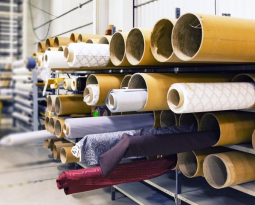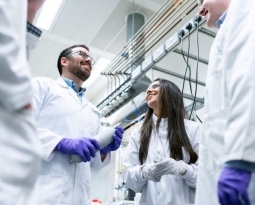Mississippi Patent of the Month – December 2020
Cars and smartphones are two commonly owned items. Many people own both. They’re also two items that don’t mix well. In 2018, 2,841 people were killed due to distracted driving, most commonly texting or talking on the phone. The US National Safety Council reported that approximately 1.6 million accidents per year are caused by cell phone use while driving. With most of the country owning mobile phones, it makes sense if you’re nervous about loaning someone your car since any damage caused by your car would be your partial or complete responsibility. And if you are not in the car with someone, you have no control over their actions and cannot stop them if they use their phone while driving. While some cars do have detection systems, they can’t differentiate between a passenger’s phone and a driver’s phone. Some phones can also detect the motion of a car and make themselves unusable while driving, however, users can easily override this with a push of a button and change the phone’s settings. StopCell LLC created an improved wireless device detection system so vehicle owners can know whether or not the driver of their vehicle is using their phone while driving.
The detection system includes a diagnostic unit placed within the vehicle that communicates with a remote rules engine. After detecting wireless device transmissions, the diagnostic unit sends the transmission data to the remote rules engine, which can then label the transmission as driver wireless usage, or not. The rules engine can determine this based on passenger data (i.e., if there’s a passenger in the car) or the vehicle status ( i.e., if the engine is on or the car is parked) or if there is a hands-free method of communication. Passenger data can be collected using other sensors, such as seat belt sensors, seat pressure sensors, etc. But if a transmission was sent while the car was in motion and no passengers were present, the rules engine will send a real-time alert to the owner of the vehicle (ironically through a text), and sound an alarm within the car or start a shielding unit. The shielding unit can transmit a signal that interrupts the transmission, so the phone can no longer be used within the car.
Are you developing a new method? Did you know your development work could be eligible for the R&D Tax Credit and you can receive up to 14% back on your expenses? Even if your development isn’t successful your work may still qualify for R&D credits (i.e. you don’t need to have a patent to qualify). To find out more, please contact a Swanson Reed R&D Specialist today or check out our free online eligibility test.
Who We Are:
Swanson Reed is one of the U.S.’ largest Specialist R&D tax advisory firms. We manage all facets of the R&D tax credit program, from claim preparation and audit compliance to claim disputes.
Swanson Reed regularly hosts free webinars and provides free IRS CE and CPE credits for CPAs. For more information please visit us at www.swansonreed.com/webinars or contact your usual Swanson Reed representative.

















